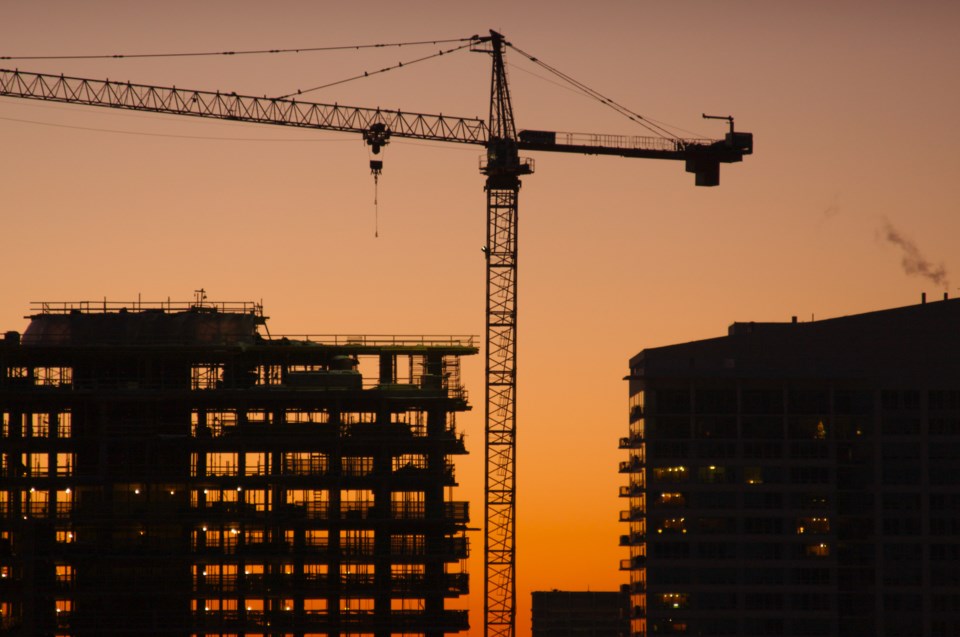York Region deferred a decision on how it will grow over the next 30 years after pressure from advocacy groups and council division on the level of sprawl that should be allowed.
Regional staff brought forward several scenarios to fulfill provincial growth targets, recommending a 50 per cent intensification rate, phasing to 55 per cent in later years, opening up 2,050 hectares of land outside settlement areas for development. But council did not make a decision after hearing several delegations opposing more urban sprawl, ultimately deferring several resolutions to Oct. 21.
East Gwillimbury’s undeveloped land is one of the focal points of the proposal. But Newmarket Mayor John Taylor said that would have a significant impact on Newmarket. He suggested examining higher intensification rates instead.
“Intensification is better for the environment. It’s cheaper because it’s using mostly existing infrastructure and its transit-oriented development,” Taylor said. “It’s hard to imagine we wouldn’t want to embrace it as fully as we can.”
The provincial growth plan forecasts York with a target population of 2.02 million by 2051, nearly one million more than today — representing the highest share of growth in the GTA. To accommodate that, staff are proposing using greenfield areas in the “whitebelt” or outlying undeveloped areas in York Region. Staff argued higher amounts of intensification would come with greater financial risk, and there is a market demand for ground-level dwellings.
“This scenario, in staff’s view, strikes the right balance,” chief planner Paul Freeman said, “(and) addresses the majority of local municipalities. It maximizes growth potential in East Gwillimbury.”
But council heard from several organizations contesting the plans and urging for a delay in the decision given the one-week notice of the meeting.
Environmental Defence, an environmental advocacy organization, said the plan would needlessly open too much land for development, threatening watersheds and destroying quality farmland. It argued York should keep future development within current settlement areas with zero-sprawl options.
“The proposed expansion options would destroy and catastrophically degrade huge swathes of York Region’s remaining farmland, forests and wetlands and natural heritage, including Lake Simcoe,” program manager Philip Pothen said.
Several municipalities had individual grievances with the growth proposals, including East Gwillimbury, which is dissatisfied with how much of its whitebelt will be developed under the proposal. It wants 100 per cent of its whitebelt lands opened for development, a motion tabled but deferred for Oct. 21.
Taylor said growth in East Gwillimbury has significant implications for Newmarket. He noted many people in East Gwillimbury commute to Newmarket for shopping and education. He added that development could hamper Newmarket’s intensification efforts, especially in the Yonge and Davis corridors.
“The greater amount of ground-related product around, the less likelihood of succeeding in intensification,” Taylor said. “Our community, like others, is really frustrated with congestion. And the truth of it is that over half the congestion that is created on our streets right now is not coming from growth in Newmarket. It’s coming from growth in East Gwillimbury.”
Taylor also said East Gwillimbury’s expansion will require sewage capacity provided by Upper York Sewage Solutions, a project stuck in limbo waiting on provincial environmental assessment approval.
East Gwillimbury Mayor Virginia Hackson said growth is important to her town, adding the lack of a high school is an issue.
“I’m very sorry, Mayor Taylor, that our residents are coming into Newmarket, spending their money, their banking, their kids are getting educated and many of them end up buying homes in East Gwillimbury. I didn’t realize there was such a big problem for you on the streets,” she said. “It’s all about making a complete community and we’re short of that yet.”
Taylor requested staff bring more details about a 60 per cent intensification scenario, which would result in only 700 hectares of whitebelt development, 1,350 less than the staff recommendation.
Vaughan Councillor Gino Rosati said congestion due to intensification is an issue, and 50 per cent intensification should be enough.
“Anything higher than that, I think it’s very difficult,” Rosati said. “Every time we have a proposal to intensify, it impacts existing communities.”
The proposals of different municipalities will come back with more information at special meeting Oct. 21, with York council due to make decisions then. Staff will use the growth decisions in developing a new draft regional official plan, which will then be subject to further public consultation.
